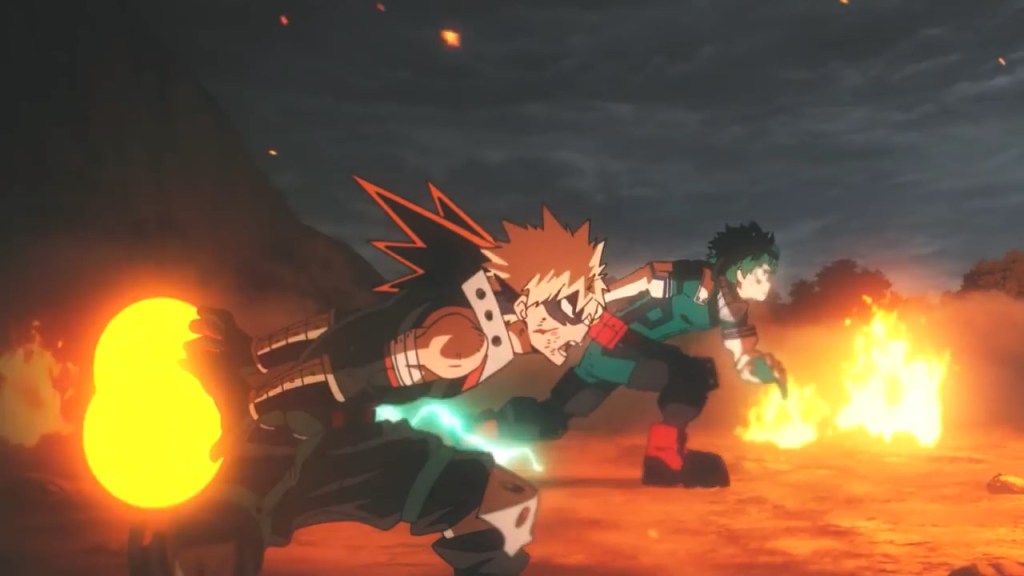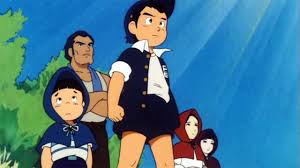NR, 56m, 1992
With the Voice Talents of Minako Naka (Midori), Norihiko Morishita (Masamitsu), Keinosuke Okamoto (Koijirô Arashi), Kazuyoshi Hayashi (Akaza), Yoshifumi Nomura (Muchisute), Sanae Katô (Benietsu) and Yumiko Takagi (Kanabun). Directed by Hiroshi Harada. Produced by Hiroshi Harada. Screenplay by Hiroshi Harada. Music by J.A. Shîzâ. Based on Shōjo Tsubaki by Suehiro Maruo.

In my experience as an anime fan, there comes a time when a person watches anime for the first time and comes to the realization that anime is unlike anything they’ve ever seen before. Prior to watching my first anime, which was Fullmetal Alchemist: Brotherhood, I had no idea that animation could go to the lengths that Fullmetal Alechemist was going in terms of content and quality. Granted I was fourteen when I first saw the show, so my worldview of animation was limited. This review covers an anime film that once again pushed the boundaries of what I can sit through. This is coming from a guy who has seen A Serbian Film, Cannibal Holocaust, Salo, and trudged through the swamp of 4chan.
The film opens with Midori (Minako Naka) selling flowers, where she meets the seemingly kindly Mr. Arashi (Koijirô Arashi), who tells her that if she ever needs help to go and find at his circus. Upon returning home Midori discovers a horrible sight. Her mother had succumbed to her illness and is already partially eaten by rats and mice. With nowhere else to turn to (the film never explains why Midori didn’t go to an orphanage). Midori takes up Mr. Arashi on his offer and goes to visit him at the circus to beg for his help. Immediately after arriving at the circus, Midori is physically, emotionally and sexually abused by every member of the freak show. This continues for quite some time until the arrival of the dwarf Masamitsu, who takes an immediate shining to Midori. Under his protection, Midori is spared from any more abuse from the members of the freak show. I’d like to tell you that this film ends on a happy note, but that would be a lie, as poor Midori suffers much more for the rest of the film.
The plot of this film is rather difficult to critique, because when you get down to it, it basically comes down to. How much pain and suffering can we inflict on this girl? Even the one glimmer of happiness for Midori, which is the relationship between Midori and Masamitsu, is uncomfortable as Midori is around the age of twelve and Masamitsu is middle-aged. The writer and director of this film, Hiroshi Harada, initially only wanted to distribute this film exclusively at carnival freak shows, so I doubt plot and characters weren’t the real focus during the production of this film. Instead, we’re treated to the torture and humiliation of a twelve-year-old girl for almost an hour. This film was banned in Japan upon its release and I can hardly fault Japan for doing this. Despite being one of the most graphic films I’ve ever seen Cannibal Holocaust at least had a reason for going as far as it did, it was trying to make a point and in my eyes, it succeeded in that endeavor. Shōjo Tsubaki does not have a message that it’s trying to make. It’s just a film that relies on fringe and shock tactics, which is very effective at first, but when the viewer is constantly barraged with such horrific content, they’re either going to stop watching or become numb to it.
According to multiple sources I came across while researching this film, Hiroshi Harada animated most, if not the entirety of this film. That in of itself is very impressive as animating a single scene can take an animation team several weeks to complete, However, that doesn’t mean that this film looks good. The film’s general look takes inspiration from the Japanese art style known as Muzan-e, which translates out to blood prints. Muzan-e art typically portrays violent acts of murder or torture. In this aspect Harada did succeed as the overall look of the film looks like a hellish landscape of filth, sometimes gore and debauchery. The character movement in this film is minimal at best as when a character does actually move, it’s only through the use of limited animation. Now limited animation can work as it was used extensively in the Tom and Jerry and Looney Tunes shorts as well as animated television series like Scooby-Doo and the Peanut specials. But with Shōjo Tsubaki, the animation style just looks odd and rather jarring. I have to give some credit to Harada as animating an entire film is a Herculean feat to say the least, but that doesn’t excuse the film for looking so rough.
As a long time anime and film connoisseur, I’ve seen some messed up stuff in my day. That being said this film remains the most graphic and horrific animated film I’ve ever seen. Having said that I know quite a few of my readers will see this statement and think “Ok, now I’ve got to know.”. I should know because I had a similar reaction when a friend of mine told me about, calling it the worst animated thing she’d seen in terms of content. To put thing into perspective, in the first few seconds of the movie a character is seen biting the head of a live chicken while it squawks in thrashes about in pain and horror. This film also contains one of the worst things to happen to a dog in an animated project. As soon as I saw the good-natured protagonist caring for the puppies, I knew something terrible was about to happen. I won’t spoil what happens, but I will say that what happens to the puppies ranks up there with the dog scenes from Elfen Lead and JoJo’s Bizarre Adventure.
Throughout this review, I’ve repeatedly called this film out on how graphic and shocking it is. Despite all that I saw I wouldn’t say this film repulsed or even really offended me, granted my mileage for what I can sit through has been pushed beyond what most people are probably willing to sit through. Am I glad I saw this film, in an odd way maybe a little, as the film did give me an odd appreciation for life. After watching this film, I even did some research on the film, which is not something I always do after watching a film, and I found quite a few sources didn’t even mention this film. I couldn’t even find an entry for this film in the 2nd edition of The Anime Encyclopedia by Jonathan Clements and Helen McCarthy. This surprised me as the book is a mammoth sized book that is a great reference guide for everything anime. This could also be another point in the film’s favor as I don’t normally dive into studying a film as methodically as I did with this film unless the film leaves a deep impact on me. That being said I can not out of good faith recommend this film to most people. Even the “nice” scenes in this film are fringe worthy when you understand what’s going on. The only people I can recommend this film are those few people who actually like films that rely on shock value for the sake of shock value, and even then I’d definitely recommend other films like Tusk, Cannibal Holocaust and The Human Centipede over this film, as those films at least had some semblance of a reason for existing, but in the case of Shōjo Tsubaki, I can’t think of a single reason for this film to exist outside of using it for psychological torture.









